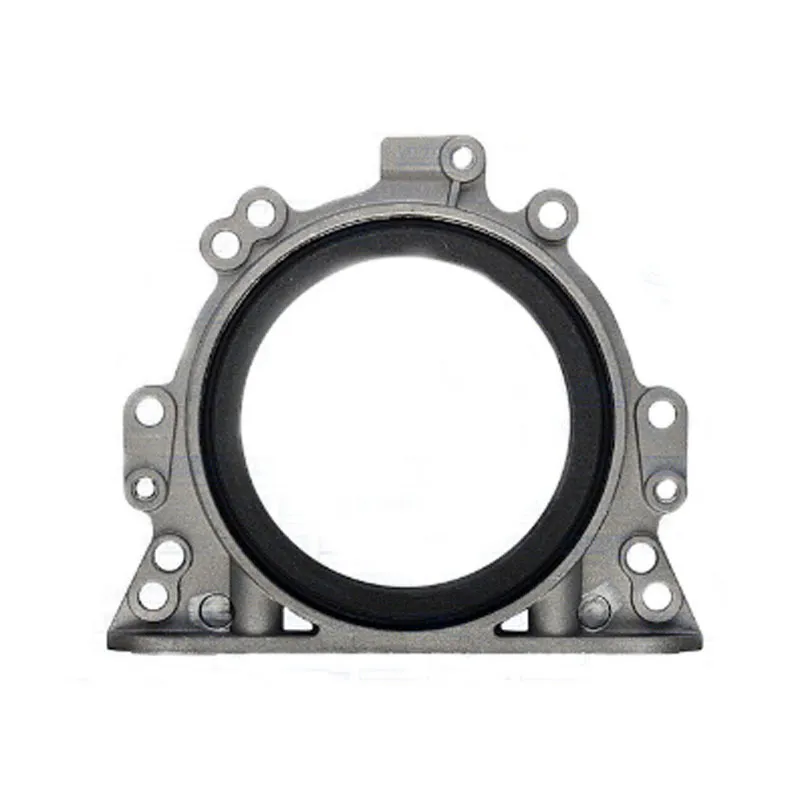Oil Seals and Grease Seals Information
Oil Seals and Grease Seals Information

Oil seals and grease seals have a flexible lip that rubs against a shaft or housing to prevent the leakage or ingress of fluids and dirt.
For proper installation, the seal lip should point towards the medium being contained. Some oil seals and grease seals have a spring to help keep the lip in contact with the shaft.
Oil and grease seals are used to retain or separate lubricants or fluids. These seals are primarily used for rotary applications only.
Types of Oil Seals and Grease Seals
The seal type for oil seals and grease seals can be oil seals or other types. An oil seal can also called flexible lip, radial lip, or rotary shaft seal. Common configurations include single lip, double lip, triple lip, and four or more lips.
Bearing Isolators
 Bearing isolators are dynamic seals designed to protect bearings from outside contaminants. They are comprised of a rotor (rotating) and stator (stationary) member. Some bearing isolators are of labyrinth construction while others use O-rings or other positive seals.
Bearing isolators are dynamic seals designed to protect bearings from outside contaminants. They are comprised of a rotor (rotating) and stator (stationary) member. Some bearing isolators are of labyrinth construction while others use O-rings or other positive seals.
Other types of oil seals and grease seals include:
- Single lip oil seals
- Double lip oil seals
- Metal cased
- All rubber or polymer
- Internal orientation
- External orientation
- Axial orientation
- Spring-energized
Engine Crankshaft Oil Seal 9031683001
Specifications
Common specifications include sealing orientation, construction parameters, dimensions, service limits, and lip materials.
Sealing Orientation
The sealing orientation and direction is important to consider for oil seals and grease seals.
- Rod seals, also referred to as shaft seals, are radial seals. The seal is press-fit into a housing bore with the sealing lip contacting the shaft.
- Piston seals are radial seals. The seal is fit onto a shaft with the sealing lip contacting the housing bore. V-rings are considered external lip seals.
- A symmetric seal is symmetrical and works equally well as a rod or a piston seal.
- An axial seal seals axially against a housing or machine component.
Construction Parameters
 Important seal construction parameters to consider include metal casings, and dual lip elements.
Important seal construction parameters to consider include metal casings, and dual lip elements.
Dimensions
- Shaft outer diameter or seal inner diameter
- Housing bore diameter or seal outer diameter
- Axial cross section or thickness
- Radial cross section
Service Limits
- Maximum operating speed
- Maximum operating pressure
- Vacuum rating
- Operating temperature
Lip Materials
- Ethylene acrylic
- EDPM
- Fluoroelastomer
- Fluorosilicone
- Nitrile
- Nylon or polyamide
- Polychloroprene
- Polyetheretherkeytone
- Polyoxymethylene
- Polytetrafluoroethylene
- Polyurethane
- Urethane
- Natural rubber
- Sintered bronze
- Cast iron
- Stainless steel
- Felt
- Leather
Many seal manufacturers use their own proprietary material. Consult with manufacturer for proprietary material specifications.
-
Your Essential Guide to Car Repair Kits: From Rust to Dings
News Jun.13,2025
-
Understanding Vital Engine Seals: Key Gaskets in Diesel and Performance Engines
News Jun.13,2025
-
The Vital Role of Bearings in Marine and Boating Applications
News Jun.13,2025
-
Sealing the System: A Complete Guide to Engine Oil Gaskets
News Jun.13,2025
-
Sealing the Foundation: A Complete Guide to Engine and Transmission Pan Gaskets
News Jun.13,2025
-
Essential Bearings and Hubs for Marine Vessels and Trailers
News Jun.13,2025
-
Your Complete Guide to Automotive Oil Drain Plugs and Valves
News Jun.12,2025
Products categories
















